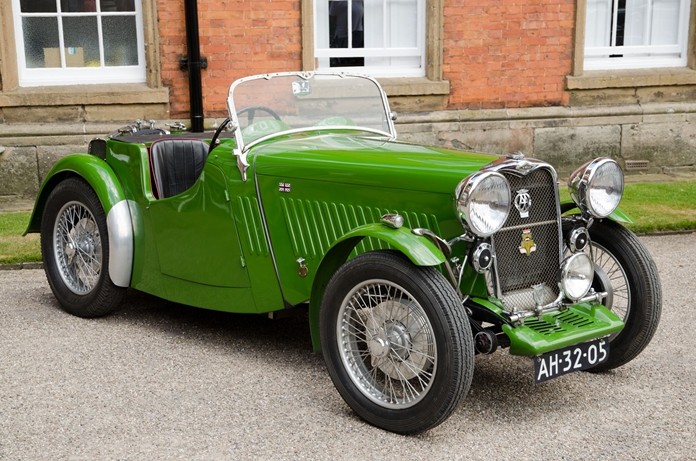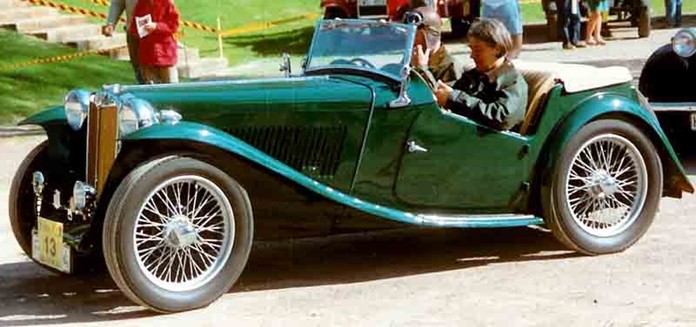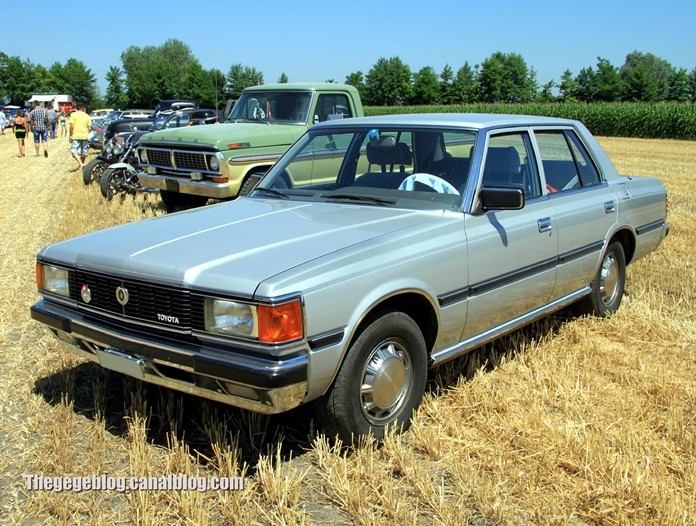
I’ve had a lot of cars. Even a quick count has the total over 100. However, as I have been besotted by cars all my life, this means there is a fair swathe of time that covers.
My first motoring memory was a wonderful BRG Singer 9 Le Mans sports car which my father bought post WWII. He said it was one of the three Singers entered at Le Mans, and even though it had huge headlights with stone guards, it probably wasn’t one of the team cars. Dad was known to tell a few fibs, but I loved that car. I cried when it was sold.
The next family car was a 1933 Morris Minor sedan. What a come-down from the racy Singer, but at least I was allowed to drive it on the deserted country roads of Scotland. The fact that the accelerator was in the middle, for some peculiar reason known only to William Morris (later Lord Nuffield), made driving the next car a problem till I got used to the normal position for the go pedal being on the right. The Morris was sold to the wreckers with a slipping clutch in 1953. I cried when that one went as well.
The first car I actually “owned” was a 1949 Austin A40 Devon. This model is distinguishable from the 1950 A40 Devon, in that it does not have quarter lights. I’m sure you will be on the lookout from now on. It does not really deserve to be remembered, other than the fact that I had to learn auto repairs to keep it running. My father bought me another Haynes manual, my automotive bibles.
By this stage in my ‘auto’ biography I had joined the MG Car Club (after beating an MG TF with the A40 in an unauthorized street race!) and I bought a BRG 1949 MG TC. I really was the starving medical student, working as a night watchman at the Red Cross Blood Bank and pumping petrol at the weekends and convinced a bank manager to give me a loan for “Text books”.

Having been seconded to a hospital in the Australian outback as a medical student, my next vehicle was a 1953 Ford V8 Customline. A lazy flat-head, side valve, huge lumbering beast that wallowed along the red dirt roads of western Queensland. It eventually disgraced itself by breaking a front stub axle and gently turned turtle on a suburban back street.
Buying another rather tatty Customline in 1964 for $50, I transferred all the good bits and traded it in for $175 on my next car, a black 1955 MGA, complete with a slipping clutch but with a new one in a box on the passenger’s seat. Another Haynes manual later and the MGA now had a clutch and numbers on the doors with white shoe polish and my racing career began.
A working trip to the UK and Europe in 1966 saw my first Mk VII Jaguar in the garage, followed by another Mk VII M. Just like the Customlines, I cannibalized the two cars, kept the best one (VII M) and sold the tatty one.
After two years in the UK and Europe I received an offer I couldn’t refuse for the VII M Jaguar and then bought a Fiat 1100 to last me for the final three months of my stay in the UK before taking up a position as a ship’s surgeon for the voyage back to Australia. It cost five pounds, drank oil, produced a smokescreen that could bring out the fire brigade, but it lasted the 12 weeks. I parked it on Tilbury Docks in London and threw the keys in the water. (If it is still there, you can have it.)
On my return to Australia I bought a Mini 850 (sliding window variety) and a 1965 MGB roadster and an MGB fire damaged shell. Once again, cannibalizing the MGBs I built the first of the Super Bee series MGB race cars, which I drove for the British Leyland Works Team in Australia.
To tow the race car, a Chrysler Valiant ex-ambulance was purchased. What a great vehicle this was. All sorts of nooks and crannies to store tools, a stretcher to sleep on after we all took turns at driving the outfit the thousands of kilometers between home base Brisbane and race meetings in Sydney New South Wales. This had an added advantage that cars in front would see an ambulance bearing down on them and get out of the way, to be left perplexed as an ambulance with a trailer and a race car would rocket past!
When British Leyland pulled out of Australia, I was offered a very special one-off Mini Clubman GT 1275 (Shamus). What a wonderful pocket rocket that was! But oh, the quality, or lack of. Gearbox mountings, door handles, wipers, seat mounts etc etc etc all broke. After two years, Mini Clubman GT was traded in on the first of my Citroens, a new GS 1220 Club.
Thankfully it came with a warranty, as it was back at the dealership with no front brake pads after 3,000 km. The inboard discs were a swine to get at, and I only kept the GS for 12 months, replacing it with my first Japanese car. A friend sold Toyotas and I said I would buy one if it was faster than the Citroen, so a fully optioned Toyota Crown with air-conditioning that even had a crutch blower, in case the dangly bits got overheated, was next in the garage.

It was a lovely car to drive, but really too pedestrian for me, and as I had returned to racing cars, the Crown had to go. So what came next? I’m afraid you will have to wait for another day, as there are lots more to come!
What did we learn from the Spanish GP?
Well, we learned that you can take the best 20 drivers in the best 20 cars and you can produce something so boring you become very glad you weren’t paying for the telecast. It was interesting to read one of the comments regarding the televised “best bits”. The comment went: “What best bits?”
What I did notice from my stool at Fletchers Folly was just how inept was the Ferrari pit wall. There was Leclerc obviously faster than Vettel and they left both Ferrari team cars tripping themselves up. When Leclerc finally got the nod to pass Vettel, he scampered away, only to be brought into the pits for a tyre change and put on to the slower (hard) rubber, so Vettel had the advantage once more.
Of course, I should have mentioned the Mercedes team cars which finished first and second for the fifth successive time. Whomever comes out leading in the first corner then stays leading for the rest of the race. Hamilton led every lap for the entire 66 laps, good drive, but totally boring, with Bottas second for every lap, double boring. Liberty Media and the FIA you will have to do better. All over the world you could hear the snores.
Rather than being totally negative, how about these ideas to sparkle up the spectacle: Success balance as used in touring cars. Every point from the last race translates into a 10 kg extra weight to be carried.
Another idea – reverse grids. ‘Sand bagging’ is countered by awarding points reducing from fastest to slowest.
Tyres. Only one grade of tyre to be used, but of soft compound so pit stops will still be necessary.
Of the newcomers, Lando Norris (McLaren) continues to impress, even though he was given the elbow by Lance Stroll (Team Rich Daddy).
The finishing order was the same as Qualifying, other than the first corner where Bottas was beaten by Hamilton.
- Hamilton Mercedes·#44
- Bottas Mercedes·#77
- Verstappen Red Bull·#33
- Vettel Ferrari·#5
- Leclerc Ferrari # 16
The next GP is Monaco, May 26, a track which invites the drivers to try out their judgment, and most fail to get it right. The telecast will be at 8 p.m. Thai time. I will be watching at Fletchers Folly (300 meters before the Chicken Intersection on Siam Country Club Road and opposite Maxxis tyres).
Autotrivia Quiz
Last week I asked what is this car?
Engine: one-cylinder, four-stroke
Displacement: 1660 cm³
Output: 2.5 hp (1.8 kW) at 500 rpm
Surface carburetor
Valves: automatic intake valve, controlled exhaust valve
Cooling system: water/thermosiphon cooling system
Lubrication: drip-feed lubricator and grease cap
Ignition: electric high voltage buzzer ignition
Tank: 4.5 liters in the carburetor
Starter: turning the flywheel
What car was this? Clue: Driven by a lady on Sundays.
It was the very first Benz, driven by Bertha Benz, who had “stolen” the car from her husband’s workshop.
(From the M-B website) “Decades of poverty and scorn now gave way to recognition and affluence. Many years were to pass before the innovation was generally accepted by the mass of the population. But in the 20th century the automobile was to become one of the most important cultural advances of the new era. Nobody would now dare to deny the great contribution to modern life made by the Benz family. And it was not least Bertha who made this possible: with her unshakeable belief, her capital and her bravery she made a major contribution to this success story. On her 95th birthday she was proclaimed an honorary senator by the Technical University of Karlsruhe. Bertha, who was never allowed to study herself because of the social constraints of her time. When she died two days later, she departed in peace. As a woman who allowed nothing and nobody to dissuade her from her visions.”
With the FIA now patting itself on the back for having a “Women’s” class in racing, they have also forgotten Bertha Benz who was the best driver of her time. However, Automania has not forgotten her.
So to this week. 22,000 orders on its first day of its release with only 101 BHP engine. What was this car?
For the Automania dehydrated beer this week (just add hops and water and store in a dark cupboard), be the first correct answer to email [email protected] or [email protected]. Good luck!
 |
 |





